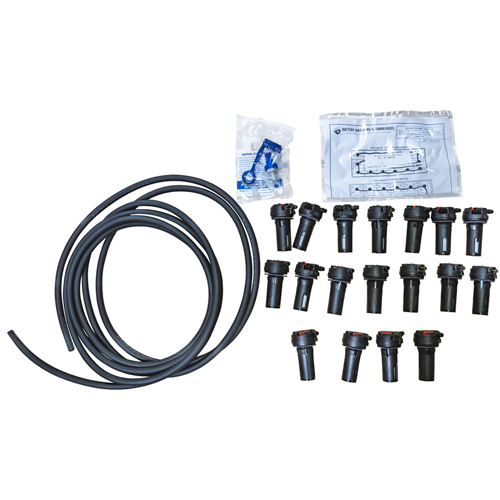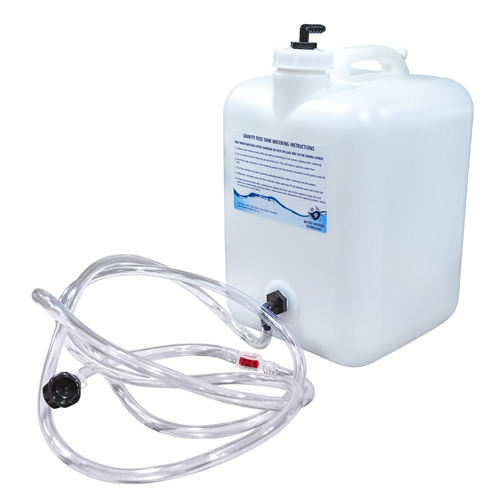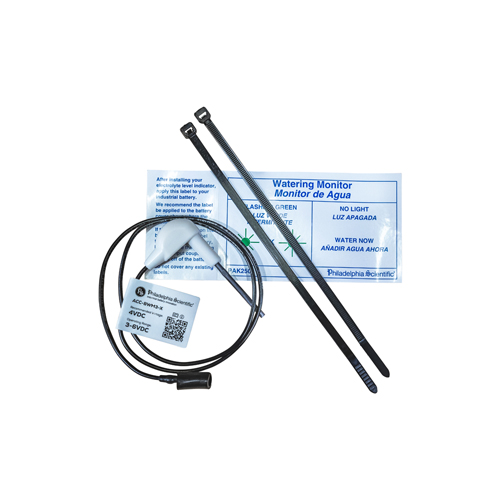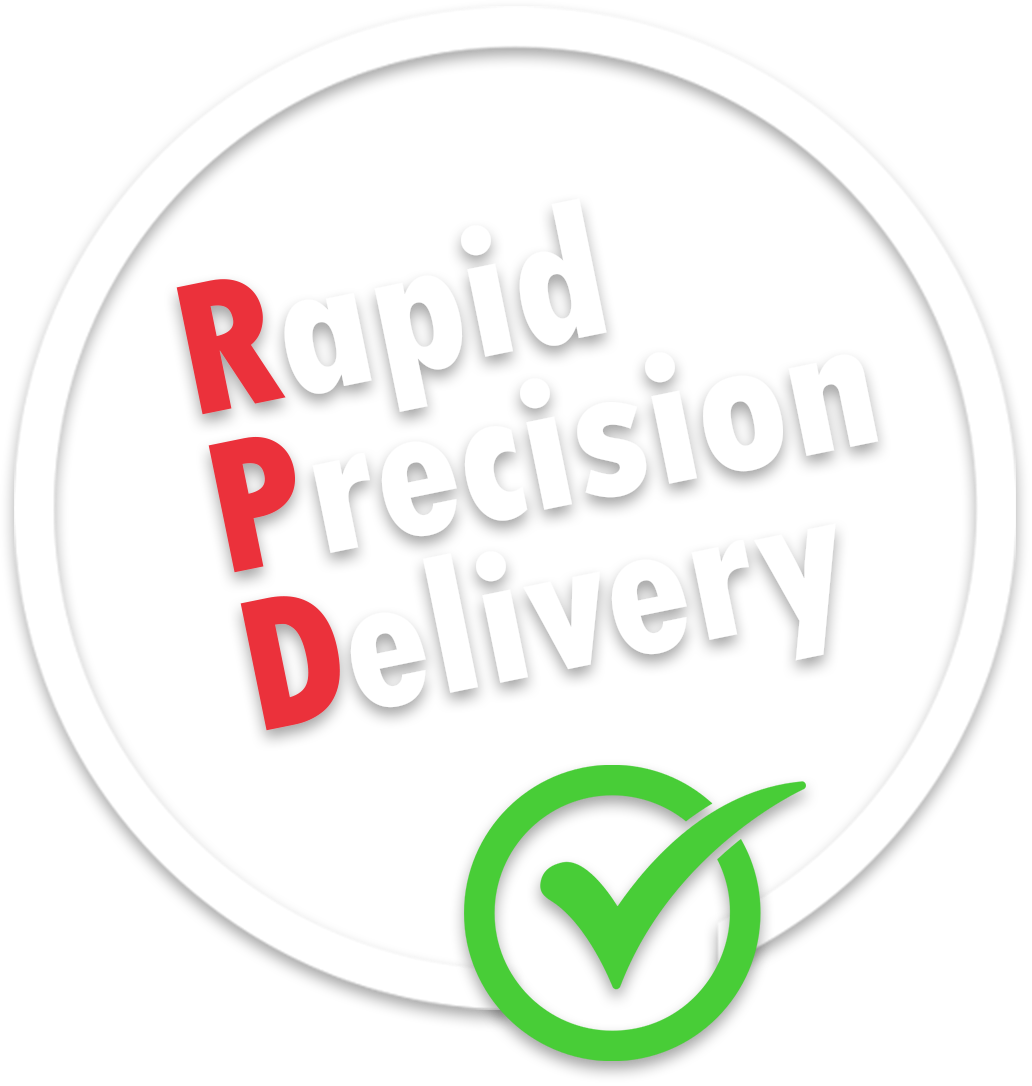Water Kit
A watering kit is essential for maintaining lead-acid batteries, especially those used in vehicles, industrial equipment or stationary power systems like solar panel arrays.
Here’s why a watering kit is crucial:
Maintaining Electrolyte Levels
Lead-acid batteries contain a mixture of sulfuric acid and water, which makes up the electrolyte. This electrolyte facilitates the chemical reaction that produces electricity. Over time, the water component can evaporate or be consumed in the chemical reaction, lowering the electrolyte level. A watering kit allows you to safely and accurately refill the battery cells with distilled water, maintaining the necessary electrolyte level for efficient battery operation.

Preventing Damage
If the electrolyte level falls too low, the exposed sections of the battery plates can corrode, leading to irreversible damage and reduced battery capacity. Keeping the electrolyte at the correct level with a watering kit helps prevent such damage.
Safety and Convenience
Watering kits typically come with tools like automatic fill systems, hand pumps, or squeeze bottles that make the process of adding water clean, quick, and safe. This prevents overfilling and minimizes the risk of acid spills, which can be hazardous.
Ensuring Uniformity
Some advanced watering kits are designed to ensure that each cell within a battery receives the exact amount of water it needs. This uniformity is crucial for maintaining the balance and overall health of the battery.
Using a watering kit helps extend the life of lead-acid batteries and ensures they perform efficiently, saving time and money in the long run on battery replacement and maintenance.
Gravity Feed Tank Watering Container
A gravity feed tank watering container is a type of water storage and distribution system that relies on gravity to deliver water.
Water Storage
The container or tank is filled with water. This tank is placed at a higher elevation than the area where the water will be used.
Gravity as the Driving Force
Since the tank is elevated, gravity naturally forces the water down through connected pipes or hoses when a valve or tap is opened.

Water Distribution
The water flows from the tank to the desired location without the need for mechanical pumps. The flow can be controlled by valves to regulate the amount of water released.
Gravity feed tank watering systems are appreciated for their simplicity and energy efficiency, as they do not require electricity or mechanical pumps to operate.
Watering Monitor
In the context of industrial lead-acid batteries, a watering monitor plays a crucial role in battery maintenance, ensuring that the batteries are operating efficiently and safely. Here’s why a watering monitor is important in this setting:
Maintaining Electrolyte Levels
For lead-acid batteries, maintaining proper electrolyte levels is essential. The electrolyte, a solution of sulfuric acid and water, facilitates the chemical reactions that allow the battery to store and release energy. A watering monitor helps ensure that the electrolyte levels remain within the optimal range, preventing the battery plates from being exposed to air, which can cause damage and reduce the battery’s lifespan.

Preventing Overwatering and Underwatering
A watering monitor helps to accurately gauge when water needs to be added to each cell of the battery. This prevents overwatering, which can dilute the electrolyte and decrease battery efficiency, as well as under-watering, which can lead to plate sulfation and battery failure.
Safety Features
Industrial batteries, particularly those used in environments like data centers, telecommunications, and backup power systems, are often large and contain hazardous materials. Watering monitors can help ensure that maintenance personnel are alerted before unsafe conditions arise, such as dry cells or overfilled cells, which can be dangerous.
Automating Maintenance Tasks
In many industrial applications, batteries are part of a large bank, and manual checking of each battery cell can be time-consuming and prone to error. A watering monitor can automate the monitoring process, providing alerts and data on the status of each cell, which helps in scheduling maintenance and reducing labor costs.
Extending Battery Life and Performance
By ensuring that each battery cell is properly maintained with the correct electrolyte level, a watering monitor can extend the overall life and performance of the battery. This is crucial in industrial settings where downtime can be very costly, and battery reliability is essential.
Overall, a watering monitor in an industrial lead-acid battery setup is vital for ensuring operational efficiency, safety, and longevity of the batteries.



